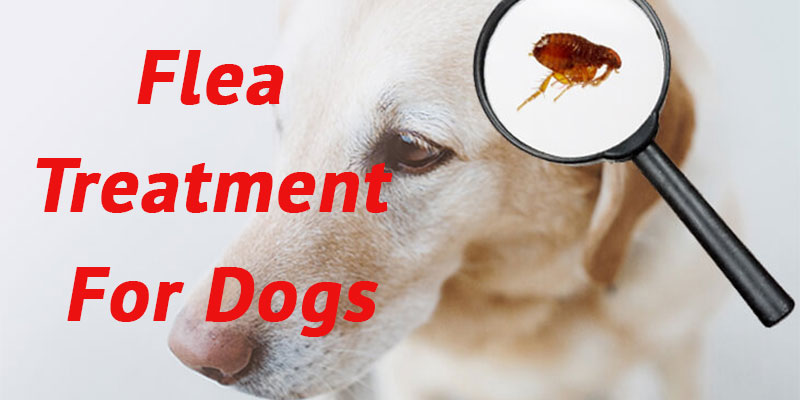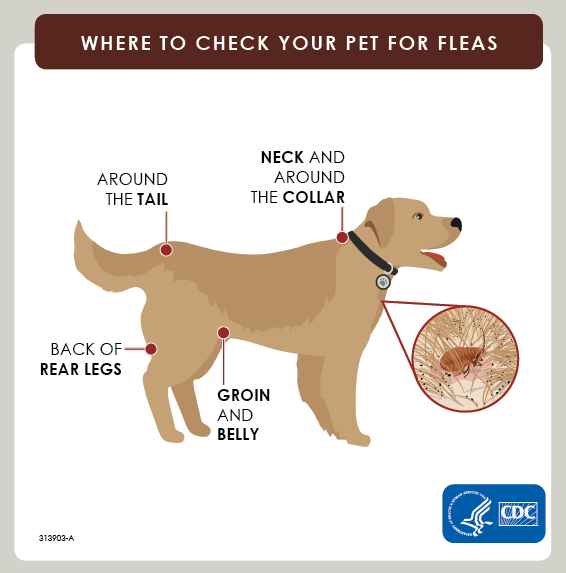Effortless Guide to Flea Treatment for Dogs: Keep Your Furry Friend Flea-Free

Fleas are a common problem for dog owners, and they can cause a lot of discomfort and health issues for our furry friends. These tiny parasites feed on the blood of dogs and other animals, and they can reproduce quickly, leading to a full-blown infestation in no time.
That's why it's essential to take flea treatment for dogs seriously and choose the right products and methods to keep your pet flea-free. In this article, we'll guide you through the process of understanding fleas, choosing the right treatment, applying it safely, and maintaining a flea-free environment for your dog.
Whether you're a new dog owner or you've dealt with fleas before, this article will provide you with valuable insights and tips to keep your dog healthy and happy. So, let's dive in and learn how to protect your dog from fleas.
Understanding Fleas and Their Impact on Dogs
What are fleas and why they are harmful to dogs
Fleas are small, wingless insects that feed on the blood of mammals and birds. They are external parasites that can cause a lot of discomfort and health issues for dogs. Fleas can transmit diseases and cause allergic reactions, skin irritations, and anemia in dogs.
Common signs and symptoms of flea infestation
- Excessive scratching and biting, especially around the tail and hindquarters
- Redness, swelling, and hair loss in affected areas
- Flea dirt (small, black specks) on the dog's coat and bedding
- Visible fleas jumping or crawling on the dog's skin or fur

How fleas can affect your dog's health
Fleas can cause a range of health problems in dogs, from minor skin irritations to serious diseases. Some of the most common health issues caused by fleas in dogs include:- Flea allergy dermatitis (FAD): an allergic reaction to flea saliva that can cause severe itching, redness, and hair loss
- Tapeworms: intestinal parasites that can be transmitted to dogs through fleas
- Anemia: a condition characterized by a low red blood cell count, which can be caused by severe flea infestations in dogs
- Bartonellosis: a bacterial disease that can be transmitted to dogs through fleas
Choosing the Right Flea Treatment for Dogs
Different types of flea treatments for dogs
There are several types of flea treatments for dogs, each with its own advantages and disadvantages. Here are some of the most common types:- Topical treatments: liquids or creams that are applied to the dog's skin, usually between the shoulder blades. They are easy to use and effective, but they can be messy and some dogs may dislike the feeling of the product on their skin.
- Oral treatments: pills or chews that are given to the dog orally. They are convenient and effective, but they may have side effects and they may not be suitable for all dogs, especially those with certain health conditions.
- Collars: plastic or fabric bands that are worn around the dog's neck. They are long-lasting and easy to use, but they may not be as effective as other types of treatments and they may cause skin irritation or other side effects.
- Sprays: aerosols or pump sprays that are applied to the dog's fur and skin. They are versatile and can be used to treat both fleas and ticks, but they may be difficult to apply evenly and they may have a strong odor.
Top recommended flea treatments for dogs
Here are some of the top recommended flea treatments for dogs, based on their effectiveness, safety, and ease of use:- Frontline Plus: a topical treatment that contains fipronil and (S)-methoprene, which kill fleas and prevent their eggs from hatching. It is easy to apply and lasts for up to 30 days.
- NexGard: an oral treatment that contains afoxolaner, which kills fleas and ticks. It is given once a month and is suitable for dogs and puppies over 8 weeks of age.
- Seresto: a collar that contains imidacloprid and flumethrin, which repel and kill fleas and ticks. It is long-lasting and water-resistant, and it is suitable for dogs and puppies over 7 weeks of age.
- K9 Advantix II: a topical treatment that contains imidacloprid, permethrin, and pyriproxyfen, which repel and kill fleas, ticks, and mosquitoes. It is easy to apply and lasts for up to 30 days.
How to Apply Flea Treatment for Dogs
Step-by-step guide to applying flea treatment
Applying flea treatment to your dog is an essential part of keeping them flea-free and healthy. Here's a simple guide to help you apply flea treatment effectively:- Choose the right flea treatment for your dog based on their size, age, and any specific health considerations.
- Read the product instructions carefully to understand how to apply the treatment correctly.
- Prepare the treatment according to the instructions, whether it's a topical solution, oral medication, collar, or spray.
- Part your dog's fur to expose their skin, usually between the shoulder blades or at the base of the neck.
- Apply the treatment directly to the skin, following the recommended dosage and application method.
- Avoid touching the treated area until the product has dried completely to prevent accidental ingestion or skin irritation.
- Monitor your dog for any adverse reactions or side effects after applying the treatment.
Safety precautions and tips
When applying flea treatment to your dog, it's important to keep the following safety precautions and tips in mind:- Wear gloves to protect your skin from coming into direct contact with the treatment.
- Keep children and other pets away from the treated dog until the product has dried completely.
- Store flea treatments out of reach of children and pets in a secure location.
- Consult your veterinarian if you have any concerns about applying flea treatment to your dog.
Maintaining a Flea-Free Environment
How to prevent flea infestations in your home
Preventing flea infestations in your home is an important part of maintaining a flea-free environment for your dog. Here are some tips to help you prevent flea infestations:- Vacuum your home regularly, especially areas where your dog spends a lot of time, such as their bed and favorite resting spots.
- Wash your dog's bedding and toys regularly in hot water to kill any fleas or eggs.
- Keep your yard clean and free of debris, such as leaves and trash, where fleas can hide and breed.
- Use flea repellents, such as citronella or lemongrass, in your home and yard to deter fleas.
Importance of regular grooming and cleaning
Regular grooming and cleaning are essential for maintaining a flea-free environment for your dog. Here are some tips to help you keep your dog clean and flea-free:- Brush your dog's fur regularly to remove any fleas or eggs and to distribute natural oils that can repel fleas.
- Bathe your dog regularly with a flea-repelling shampoo or soap, especially if they spend a lot of time outdoors or in areas where fleas are common.
- Check your dog's fur and skin regularly for signs of fleas or other parasites, such as excessive scratching or biting.
Frequently Asked Questions (FAQ'S)
Q. What are the signs of fleas on my dog?
Signs of fleas on your dog include excessive scratching, biting, or licking, red or irritated skin, and small, black specks (flea dirt) in their fur.
Q. How often should I apply flea treatment to my dog?
The frequency of flea treatment application depends on the product and your dog's specific needs, but most treatments should be applied monthly or as directed by the manufacturer or your veterinarian.
Q. Can I use human flea repellent on my dog?
No, human flea repellents may contain ingredients that are toxic to dogs and can cause serious health issues. Always use flea treatments specifically designed for dogs and consult your veterinarian if you have any concerns.
Q. Can fleas transmit diseases to my dog?
Yes, fleas can transmit diseases and parasites to your dog, such as tapeworms, Bartonella, and mycoplasma haemofelis. Flea prevention is essential for your dog's health and wellbeing.
Q. How can I prevent fleas in my home and yard?
You can prevent fleas in your home and yard by vacuuming regularly, washing your dog's bedding and toys, keeping your yard clean and free of debris, and using flea repellents such as citronella or lemongrass.
Conclusion
- The importance of flea treatment for dogs and how it can prevent flea infestations and related health issues.
- The different types of flea treatments for dogs, including topical solutions, oral medications, collars, and sprays, and their advantages and disadvantages.
- The step-by-step guide to applying flea treatment to your dog, including safety precautions and tips.
- The steps to maintain a flea-free environment for your dog, including preventative measures and regular grooming and cleaning.
Final tips and recommendations
Here are some final tips and recommendations to help you keep your dog flea-free:- Consult your veterinarian for advice on the best flea treatment for your dog based on their size, age, and any specific health considerations.
- Follow the instructions carefully when applying flea treatment to your dog and monitor them for any adverse reactions or side effects.
- Maintain a regular grooming and cleaning routine for your dog and your home to prevent flea infestations.
- Keep your dog's bedding and toys clean and free of debris, and vacuum your home regularly to remove any fleas or eggs.
